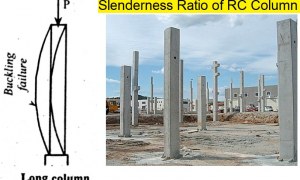🕑 Reading time: 1 minute
Different types of seismic control systems are used in earthquake-resistant design that serves the purpose of reducing the action of earthquake forces on the main structural system. Generally, there are three types of seismic control systems namely passive, active and hybrid seismic control systems. Each system is briefly explained in this article.
Contents:
1. Passive Seismic Control System
A passive seismic control system is a shock mitigation method that uses passive techniques. These do not require additional energy sources to serve the mitigation purpose. Instead, it uses the earthquake input motion to activate seismic control. The major examples of passive seismic control systems are:
- Energy Dissipation Devices
- Base Isolation System
- Dynamic Oscillators
Energy Dissipation Devices
These are mechanical systems attached to the building structure that undergoes deformation and yielding by absorbing a large portion of earthquake input energy, hence protecting the building structure.
There are wide variety of energy dissipation devices that are categorised based on its capability to enhance the energy dissipation in the structural systens. These works based on the principles like:
- Deformation of viscoelastic solids
- Phase transformation of the metals
- Yielding of metals

Mainly, there are three types of energy dissipation devices:
- Metallic Yielding Dampers
- Friction Dampers
- Fluid Viscous Dampers
- Viso-elastic Dampers
Base Isolation System
In this system, a flexible interface is introduced between the structure and foundation. This hence isolates the main structure from shaking the ground. This system increases the natural period of the structure hence decreasing the natural frequency of vibration.
Also Read: What is Base Isolation System?
Dynamic Oscillators
Dynamic oscillators are used to transform the energy among the vibrating modes. This technique makes use of supplemental oscillators. These act as dynamic oscillators. One of the popular dynamic oscillators used in construction is Tuned Mass Damper or TMD.
2. Active Seismic Control System
This method involves the process of imposing forces on the structure in order to counterbalance the earthquake forces acting on the building structure. This sytem requires additional energy source and computer -controlled actuators to operate. Hence, this system is complex compared with the passive seismic control systems.
Active control system is a new invention compared with passive systems. When an earthquake hits a building, the sensors of active control system determine the direction and the weight of the counterbalance force to be induced in opposite direction so that the building remains motionless and structure remains safe.
Hence, the whole arrangement and requirement of an active seismic control system is complex and expensive. This is not suitable for small projects.
3. Hybrid Seismic Control System
As the name states, it is a hybrid seismic control system that combines both the active and passive seismic system. A hybrid seismic control system have the following advantage over the active and passive system:
- Improved reliability
- Reduced Cost
- Power Demand is less
A hybrid seismic control system is initiated by making use of the advantages of both active and hybrid seismic control systems.
Also Read: Earthquake Resistant Design for Building Structures


